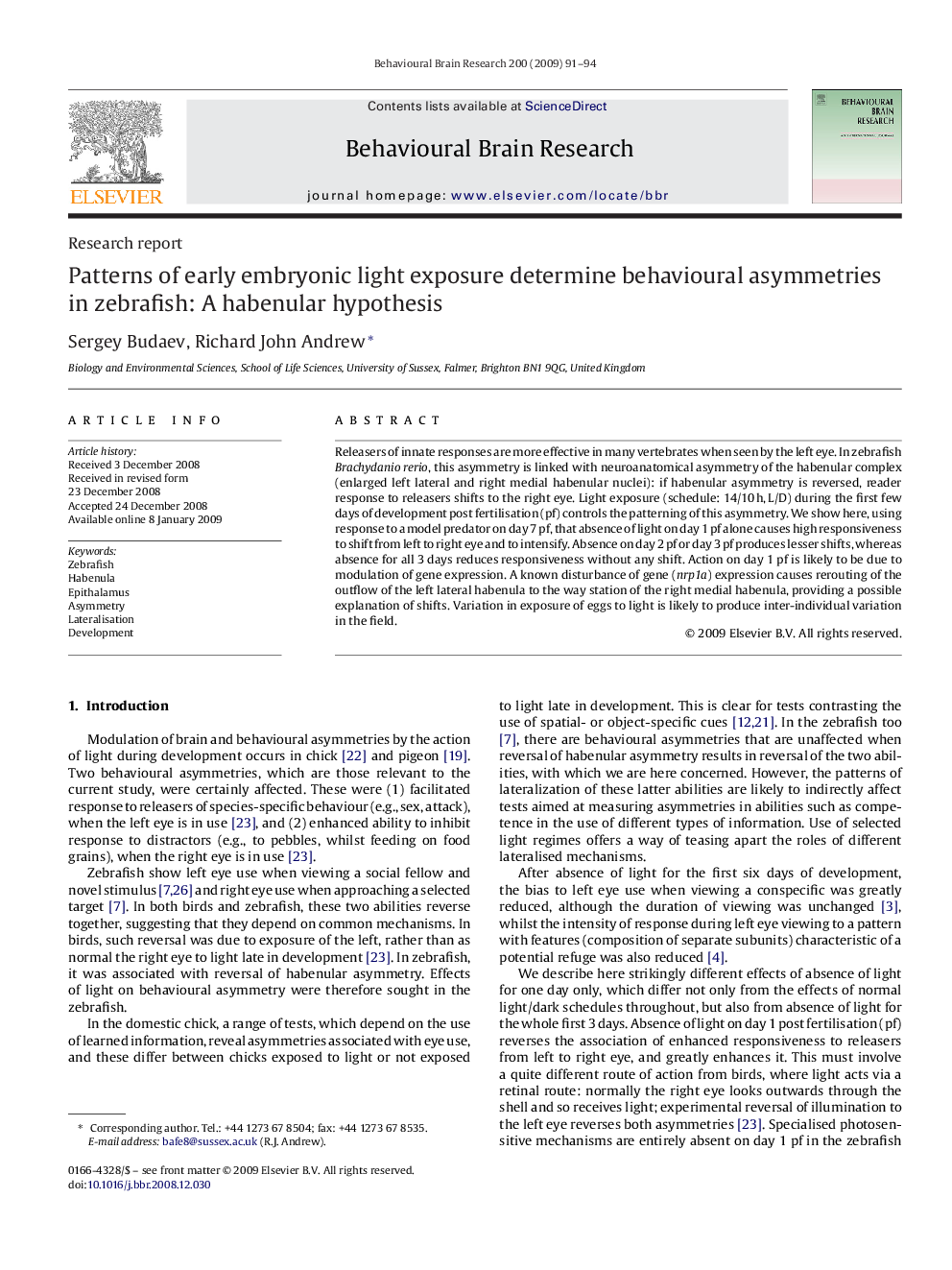| کد مقاله | کد نشریه | سال انتشار | مقاله انگلیسی | نسخه تمام متن |
|---|---|---|---|---|
| 4314786 | 1290049 | 2009 | 4 صفحه PDF | دانلود رایگان |

Releasers of innate responses are more effective in many vertebrates when seen by the left eye. In zebrafish Brachydanio rerio, this asymmetry is linked with neuroanatomical asymmetry of the habenular complex (enlarged left lateral and right medial habenular nuclei): if habenular asymmetry is reversed, reader response to releasers shifts to the right eye. Light exposure (schedule: 14/10 h, L/D) during the first few days of development post fertilisation (pf) controls the patterning of this asymmetry. We show here, using response to a model predator on day 7 pf, that absence of light on day 1 pf alone causes high responsiveness to shift from left to right eye and to intensify. Absence on day 2 pf or day 3 pf produces lesser shifts, whereas absence for all 3 days reduces responsiveness without any shift. Action on day 1 pf is likely to be due to modulation of gene expression. A known disturbance of gene (nrp1a) expression causes rerouting of the outflow of the left lateral habenula to the way station of the right medial habenula, providing a possible explanation of shifts. Variation in exposure of eggs to light is likely to produce inter-individual variation in the field.
Journal: Behavioural Brain Research - Volume 200, Issue 1, 8 June 2009, Pages 91–94